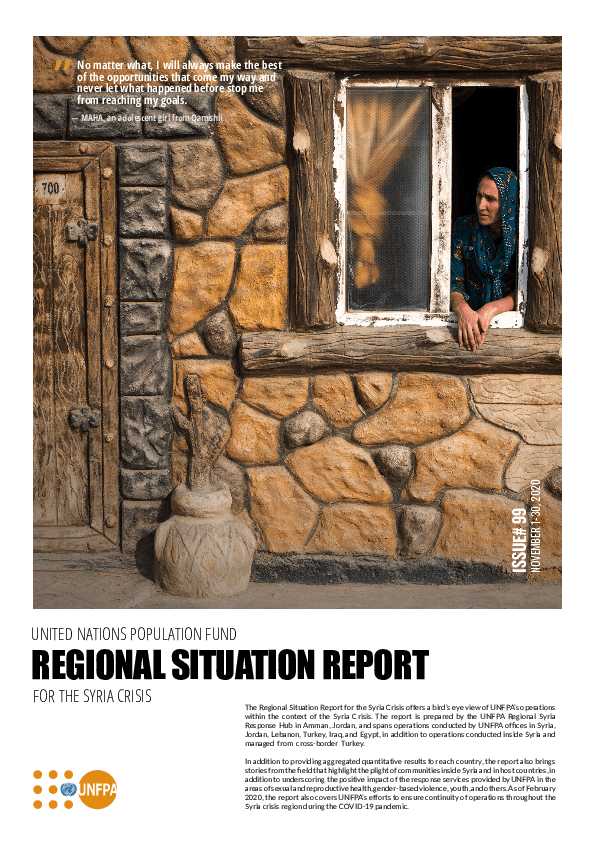
Resources
Regional Situation Report for Syria Crisis #99 November 2020
Resource date: Nov 2020
Publisher: UNFPA Regional Syria Response Hub

Resources
Resource date: Nov 2020
Publisher: UNFPA Regional Syria Response Hub
Within the Syria crisis region, which spans the Whole of Syria, Turkey, Lebanon, Jordan, Iraq and Egypt, there have been a total of 124,553,69 confirmed cases of COVID-19 as of November 30, 2020. The highest number of confirmed cases came from Turkey (1,431,648), followed by Iraq (552,549), Jordan (219,430), Lebanon (127,944), Egypt (115,911), and Syria (7,887).
Despite the relatively low number of confirmed cases in Syria, it is worth noting that the capacity for testing throughout the country remains extremely limited. Moreover, the steadily rising number of infections clearly shows that the epidemiological situation in the country has rapidly evolved and remains extremely volatile. According to the Syrian Ministry of Health (MoH), infections among healthcare workers in Syria continue to rise, which highlights the potential for the nation’s already fragile and overstretched healthcare capacity to be further compromised. Humanitarian actors continue to receive reports that healthcare workers in some areas do not have sufficient personal protective equipment (PPE).
Meanwhile, the pandemic continues to exacerbate an ongoing economic crisis that has substantially increased humanitarian needs. An inter-agency socio-economic impact assessment of COVID-19 noted a major economic downturn and significant social impacts, amplified by the ongoing financial crisis in Lebanon. An estimated that 200,000 - 300,000 jobs were permanently lost, while the informal sector and businesses have been heavily impacted, with 15 percent of small and medium sized businesses reporting permanent closure. This is particularly relevant given that recent estimates suggest that 22.4 percent of households in Syria are headed by women, up from 4.4 percent in 2009. This means that over 4.5 million people are currently living in female-headed households (FHH), representing a highly vulnerable portion of the population.